Chapter 33-34 : Protostomes and Deuterostomes
1/65
There's no tags or description
Looks like no tags are added yet.
Name | Mastery | Learn | Test | Matching | Spaced |
|---|
No study sessions yet.
66 Terms
List the two groups that all protostomes belong to
Lophotrochozoa and Ecdysozoa
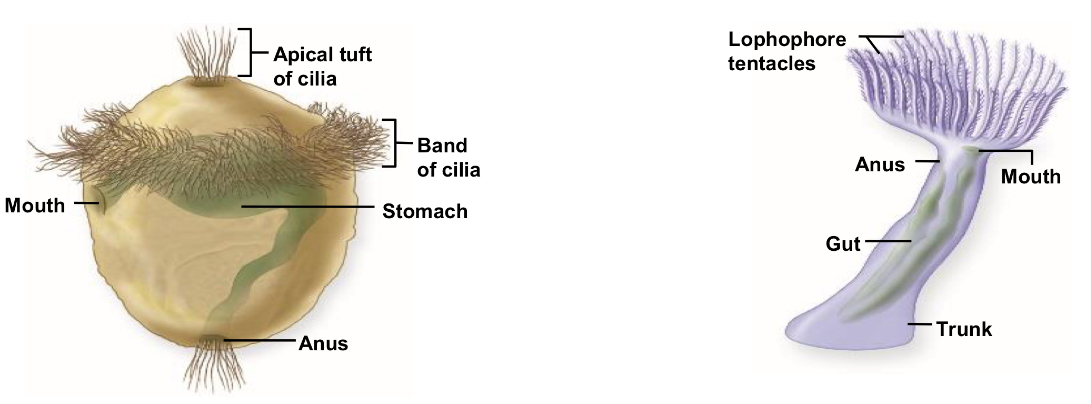
List the characteristics for the Lophotrochozoa
trochophore - a free-living larva
Lophophore - a horseshoe-shaped crown of ciliates tentacles surrounds the mouth used in filter-feeding
List the characteristics for Ecdysozoa
Contains animals that moult due to a hard exoskeleton
Two groups - Arthropods and Nematodes
Protosomes
Develop the mouth first from or near the blastophore
Deuterostomes
Develops the anus first from the blastphore
Name two phyla of deuterostomes
Phylum Echinodermata and Chordata
List characteristics of the phylum Echinodermata
exclusively marine
Endoskeleton
Pentaradial symmetry
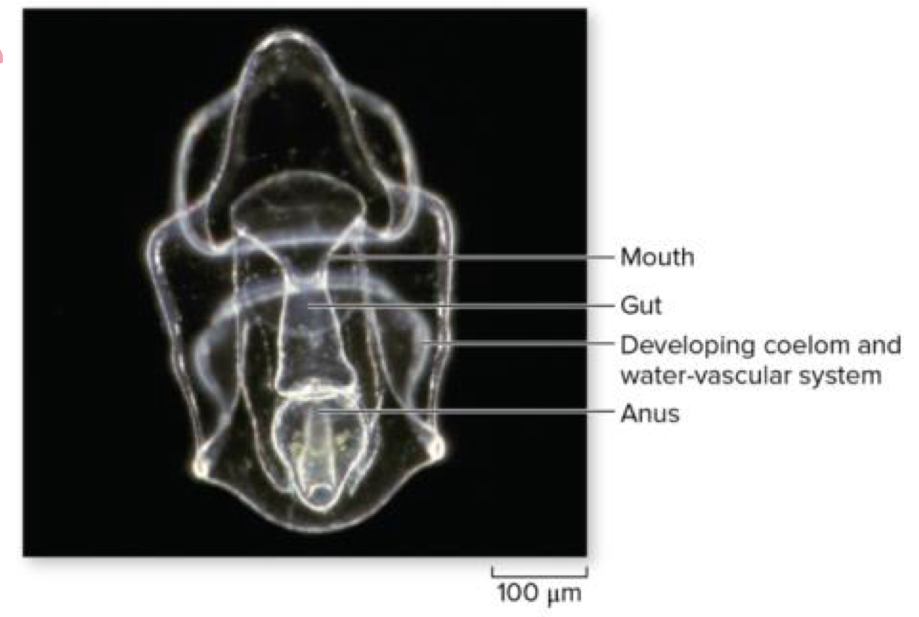
What defines the oral surface of the phylum Echinodermata
Mouth
What is important to note abut the symmetry found in phylum Echinodermata
Pentaradial as an adult, bilateral as larva and all systems are organised with branches radiating from the centre.
What is the epidermis that covers the endoskeleton of the phylum Echinodermata made of?
Calcium carbonate plates called ossicles
What is meant by the endoskeleton of the phylum Echinodermata
The ossicles may be tightly or loosely joined and all members have mutable collagenous tissue
How do the organisms of phylum Echinodermata reproduce
Some reproduce asexually by splitting ( ability to regenerate)
Most reproduce sexually by releasing gametes ( Gonochoric) into the water, free-swimming larvae, each class has a characteristic type of larva
List the 5 extant classes of phylum Echinodermata
Class Asteriodea
Class Echinoidea
Class Ophiuroidea
Class Crinoidea
Class Holothuroidea
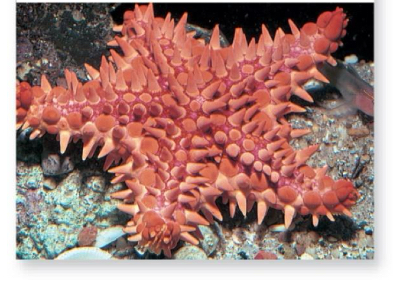
What class do star fishes belong to
Class Asteroidea

What class do sea urchins belong to
Class Echinoidea
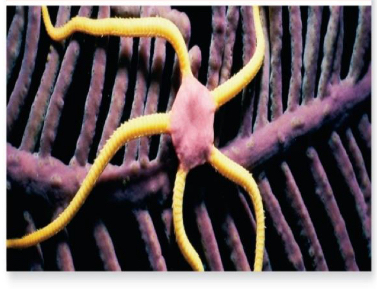
What class do Brittle stars belong to
Class Ophiuroidea
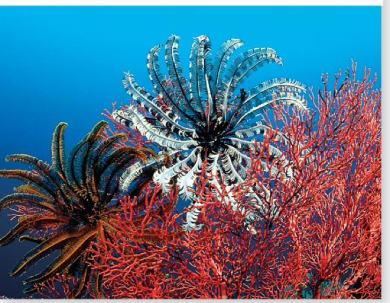
What class do Sea lilies belong to
Class Crinoidea
What class do Sea cucumbers belong to
Class Holothuroidea

What 4 features characterise the phylum Chordata and play an important role of the evolution of the phylum
Nerve cord - just beneath the dorsal surface of the animal and differentiates into the brain and spinal cord
Notochord - may be replaced by vertebral column
Pharyngeal slits - pharyngeal pouches present in all vertebrate embryos
Postanal tail - extends beyond the anus
What are somites
Chordate muscles that are arranged in segmented blocks
What are the names of the three subphyla of phylum Chordata
Urochordata
Cephalochordata
Vertebrata
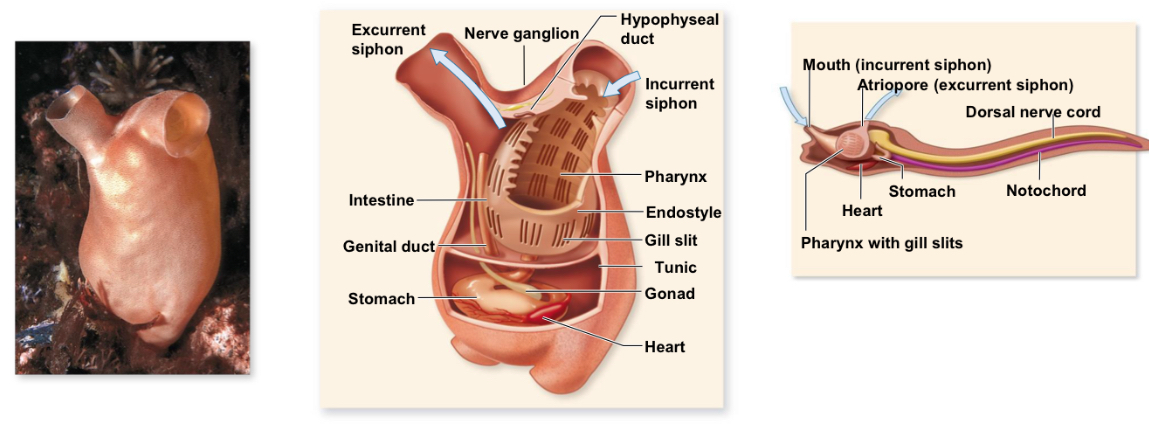
What are the characteristics of subphylum Urochordata?
Marine animals ( e.g Tunicates and salps )
Larvae have notochord and nerve cord
Adults usually lose the tail and notochord
Many secrete a tunic ( cellulose sac) that surrounds the animal
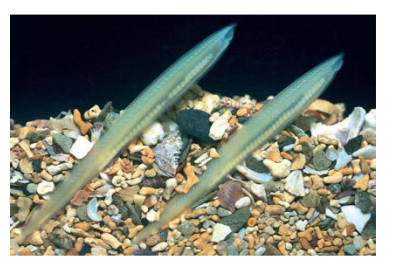
What are the characteristics of the subphylum Cephalochordata
Notochord is persistent throughout the organisms life but they have no distinguishable head
Spend most of their time partly buried
Feed on plankton using cilia-generated currents
Closest relatives to vertebrates, e.g Lancelets are scaleless chordates
How do vertebrates differ from non-vertebrates within the phylum Chordata
have a spinal column
Vertebral column - encloses and protects the dorsal nerve cord
Head is distinct and well-differentiated possessing sensory organs

What are characteristics of the subphylum Vertebrata
Neural crest - unique group of embryonic cells that form many vertebrate structures
Internal organs - liver, kidneys, endocrine glands, heart with a closed circulatory system
Endoskeleton - made of cartilage or bones making great size and lots of movement possible
When birds and mammals become dominant
After the Cretaceous mass extinction

What are characteristics of fish ( most diverse and over half of all vertebrates ) in the subphylum Vertebrata
vertebral column
Jaws and paired appendages
Internal gills
Single-lop blood circulation
Nutritional deficiencies
Which organism in the subphylum Vertebrata provided evolutionary base for invasion of land by amphibians
Fish
What are significant adaptations that occurred in bony fish
swim bladder - gas-filled sac to regulate their buoyant density
Gill cover - the operculum covers the gills and functions by permitting water pumping over gills which is efficient when organism is stationary

How is the swim bladder in bony fish able to control a fish’s buoyancy and how it functions
Gas is taken from the blood and the gas glan secretes gases into the swim bladder. Then from the bladder the gas is released by a muscular valve, the oval body

What are the 2 major groups bony fish
Ray-finned fishes - class Actinpterygii
Lobe-finned fishes - class Sarcopterygii
What are the major differences between The two major groups of bony fish
Ray-finned fishes - parallel bony rays support and stiffen each fin, there are no muscles in the fins
Lobe-finned fishes - paired fins that have a long fleshy muscular lobe, supported by central core of bones with fully articulated joints and almost certainly amphibian ancestors
What are the adaptations required for a life in a terrestrial environment
legs to support the body’s weight
Lungs to extract oxygen form air
Redesigned heart and circulatory system to drive larger muscles
Reproduction still in water to prevent egg drying
System to prevent whole body desiccation
What are the amphibian adaptions for a life in a terrestrial environment
legs adaptation to life on land
Lungs
Cutaneous respiration - supplement lungs
Pulmonary veins - separate pulmonary circuit allows for higher pressure blood to tissues
Partially divided heart - improves separation of pulmonary and systemic circuits
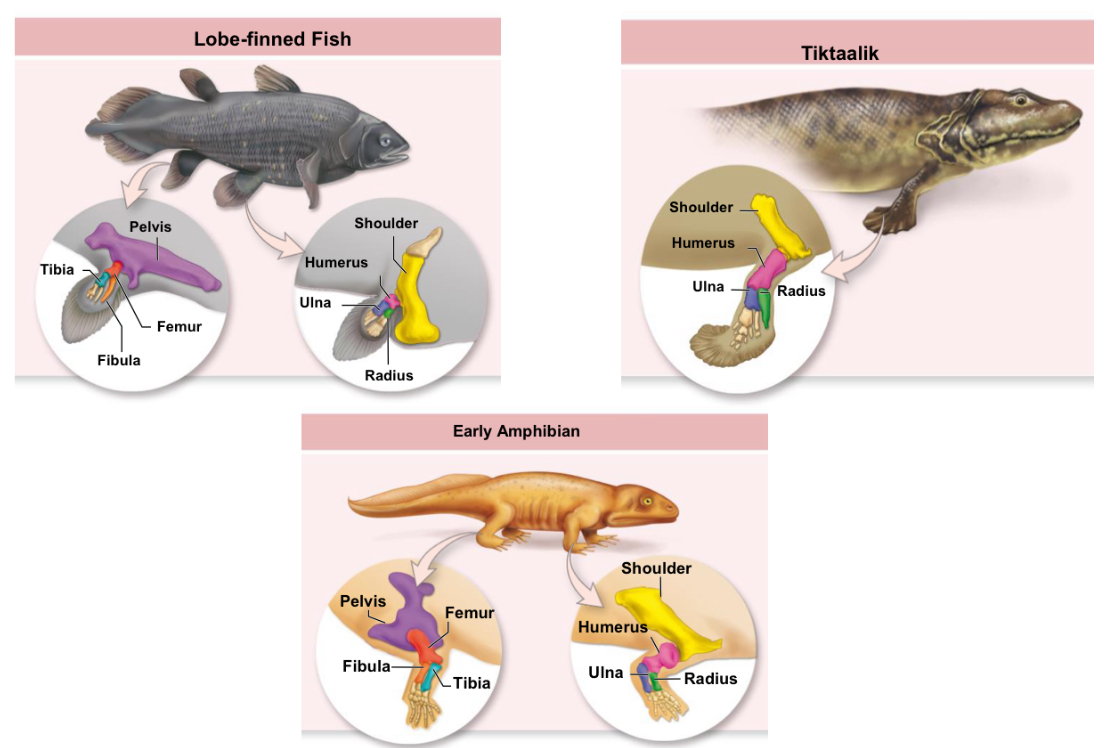
What fossil shows the transition from an aquatic environment to a terrestrial environment
Tiktaalik is the transitional fossil that is found between a fish and Ichthyostega. It has gills and scales like a fish but a neck, shoulder and the end of its limbs were a lobed fin f an amphibian.
What amphibian evolved from lobe-finned fishes
Ichthyostega
List specific characteristics of reptiles that allow them to live in a terrestrial environment
amniotic eggs - watertight
Dry skin - covers body to prevent water loss
Thoracic breathing - increases lung capacity
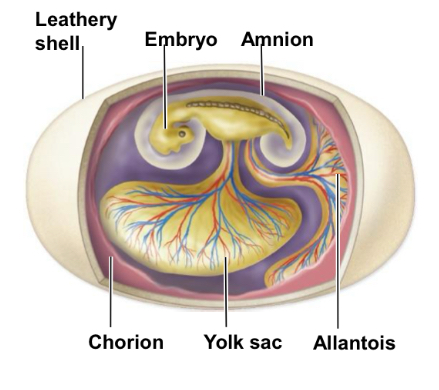
What are the four membranes of an amniotic eggs and its function
Chorion - outermost layer and allows gas exchange
Amnion - encases embryo in fluid-filled cavity
Yolk sac - provides food
Allantios - contains excreted wastes from embryo
What is the significance of the development of an amniotic egg
It allowed for vertebrates to not depend on water for reproduction therefore allowing them to become terrestrial

What skull type in the class Reptilia is this and how many holes does it have
Anapsid skull - 0 holes
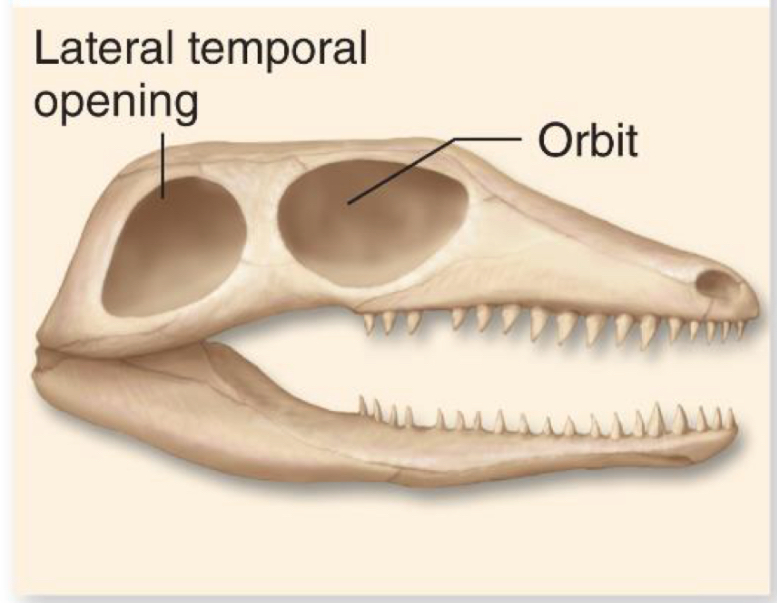
What skull type in the class Reptilia is this and how many holes does it have
Synapsids skull - 1 hole

What skull type in the class Reptilia is this and how many holes does it have
Diapsids - 2 holes
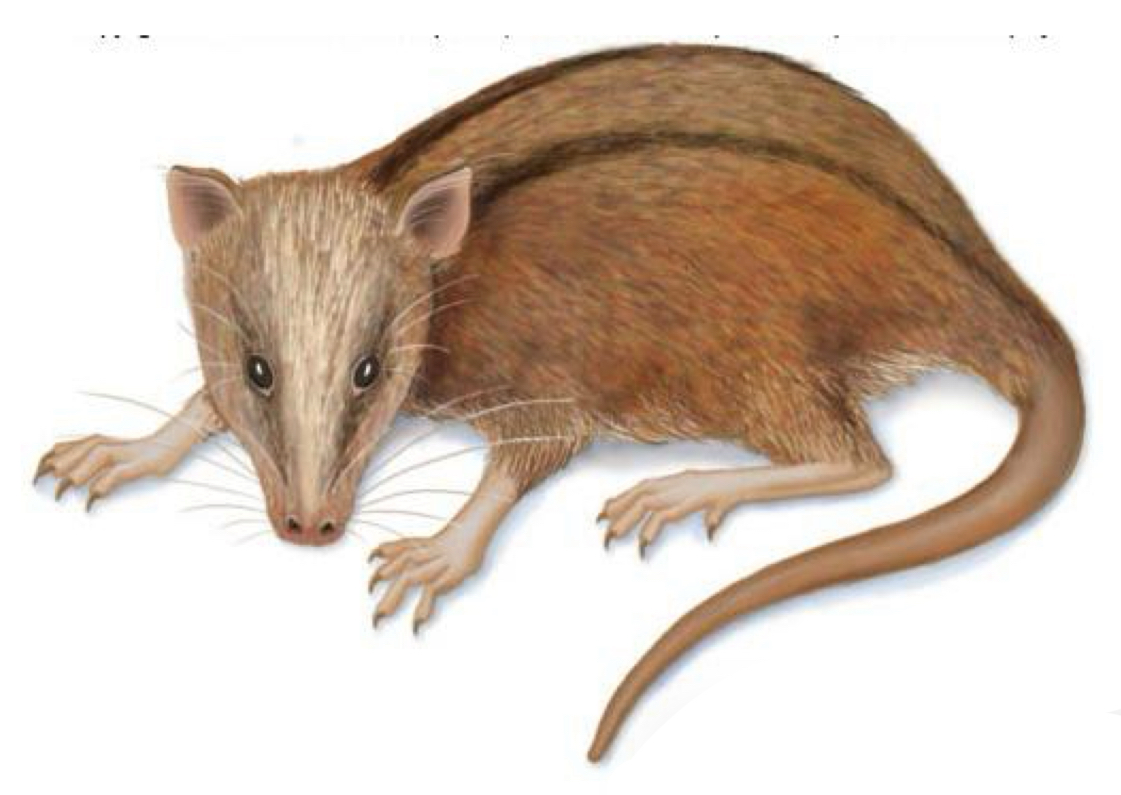
What were the first organisms in class Reptilia considered to be mammals and why
Therapsids because they were endotherms and may have had hair

What organism was the first land vertebrates t kill beasts their own size
Pelycosaurs
What were the first and vertebrates to be bipedal
Archosaurs which gave a rise to crocodiles, pterosaurs, dinosaurs and birds
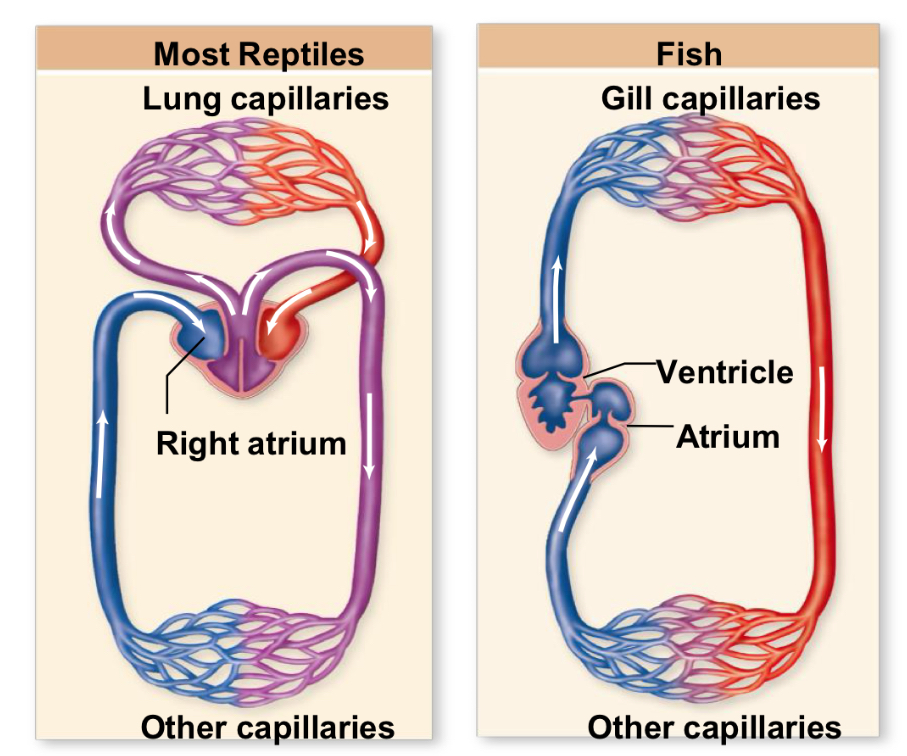
What are 2 characteristics modern reptiles developed and hw are they important in terms of evolution
internal fertilization - sperm fertilises egg before protective membranes are formed
Improved circulation - oxygen is provided to the body more efficiently due to the septum in the heart extending to form a partial wall making a 4-chambered heart
What is the difference between temperature generation and regulation for reptiles from endothermic animals
obtain heat from external sources
Regulate body temperature by moving in and out of sunlight
What are 2 fundamental traits for all mammals
Hair - long, keratin-rich filaments that extend from hair follicles and function in insulation, camouflage and sensory structure
Mammary glands - females possess mammary glands that secrete milk

What are other notable features of mammals
endothermic depends on higher metabolic rate
4-chambered heart
Respiration using diaphragm
Placenta - specialised organ that brings fetal and maternal blood into close contact
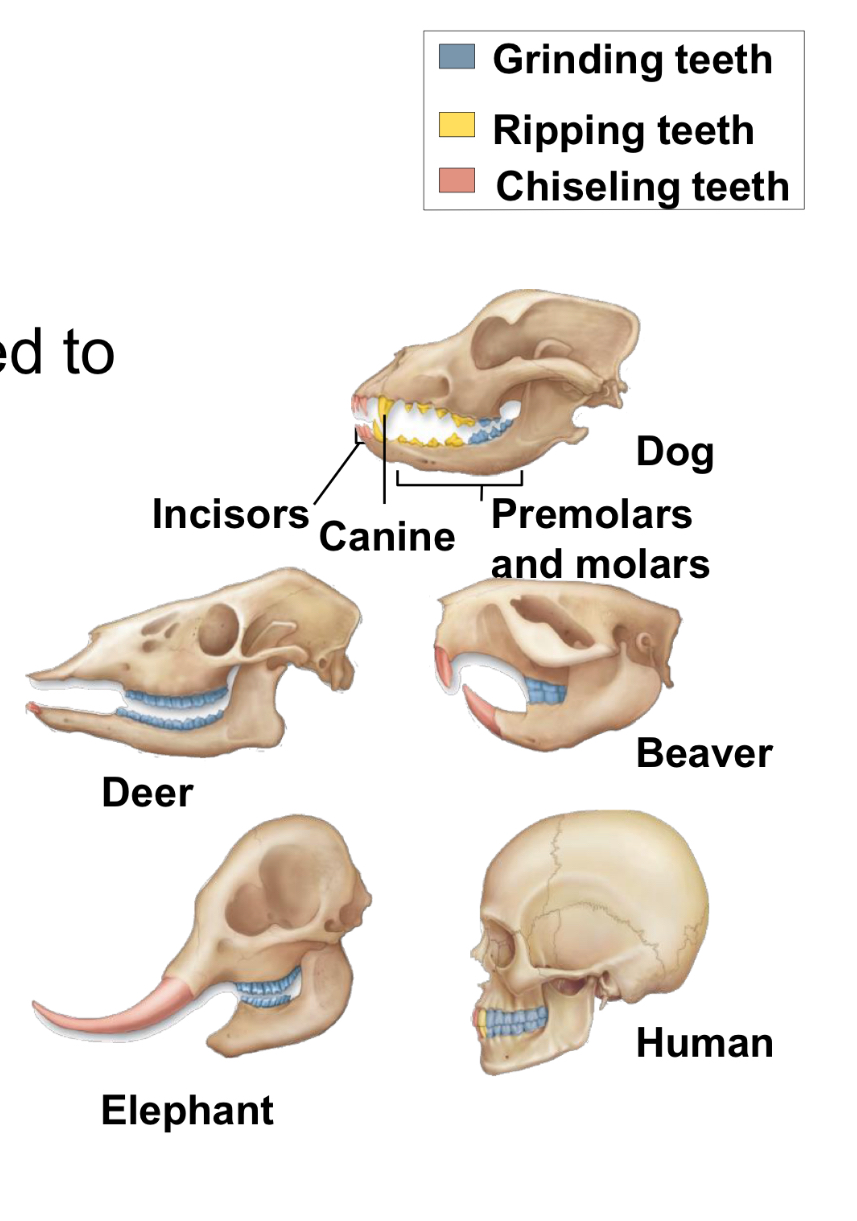
Discuss the adaption of specialised teeth in class Mammalia
Different types of teeth are highly specialised to match particular eating habits
Contrast carnivore teeth to herbivore teeth
Discuss the adaption of digestion of plants in class Mammalia
Herbivores rely on mutualistic partnerships with bacteria for cellulose breakdown
Discuss the adaption of development of hooves and horns in class Mammalia
Hooves are specialised keratin pads
Horns are bone surrounded by keratin
Antlers are made of bone
Discuss the adaption of flying mammals ( bats ) in class Mammalia
only mammals capable of powered flight
Wing is a leathery membrane of skin and muscle stretched over 4 finger bones
Navigate in the dark by echolocation
What did mammals look like during the time of the dinosaurs
Tiny, shrewlike, insect-eating, tree-dwelling creatures and may have been nocturnal due to large eye sockets
How did mammals change after the disappearance of dinosaurs
Increase in body size and major diversification during the Tertiary period
What’s re the two subclasses of mammals
Prototheria ( most primitive ) - lay shelled eggs, only live in group is monotremes
Theria - viviparous, 2 living groups ( Marsupials and Placental )

What is an example of a living organism in the subclass Prototheria
Monotremes which only have 3 living species - Duck-billed platypus and 2 echidna species
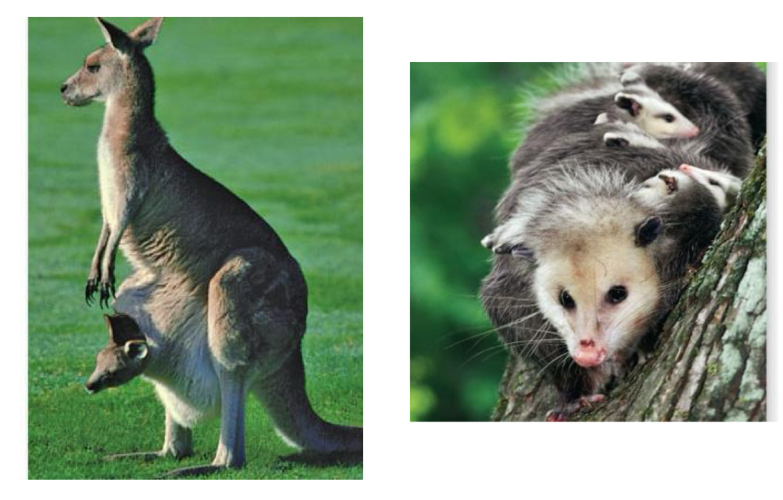
What is an example of a living organism in the subclass Marsupials ( pouched mammals )
Kangaroo ( isolation of Australia) and Opossum ( only North American marsupial )
What are two important features present in Primates that allow them to successfully adapt to an arboreal environment
Grasping fingers and toes
Binoculars vision - eyes shifted to the front of face and lets brain judge distances precisely
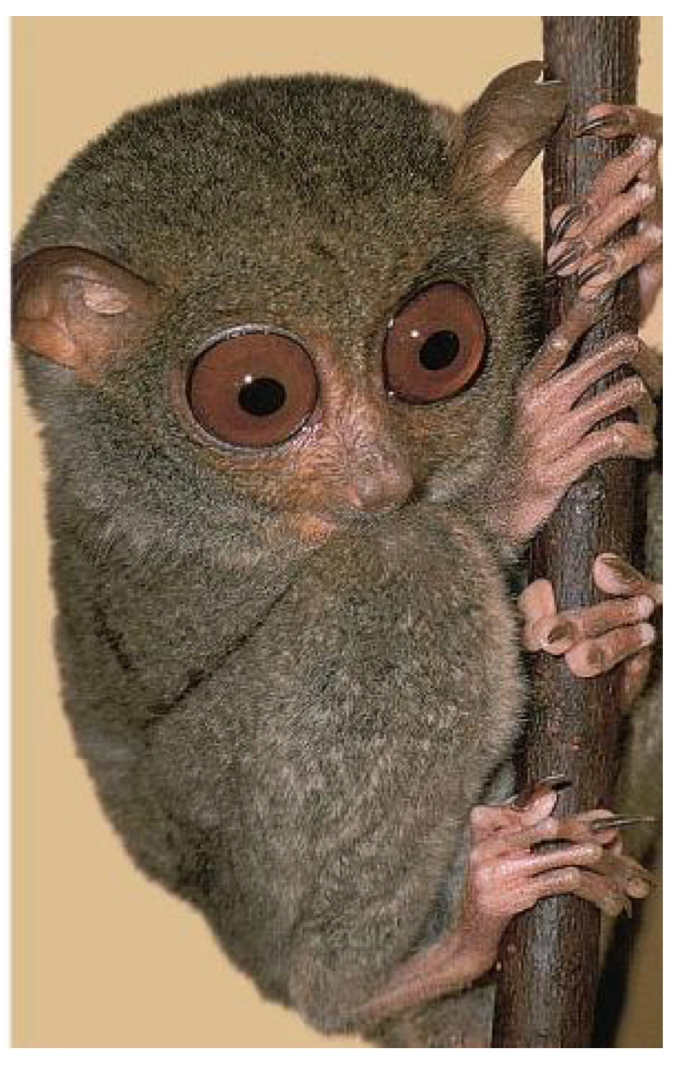
What are the characteristics of the group Prosimians
Large eyes with increased visual acuity
Most are nocturnal
E.g Lemurs, lorises and tarsiers
What are the characteristics of the group Anthropoids
Diurnal - changes eye design including colour vision
Expanded brain
Live in groups with complex social interactions
E.g monkeys, apes and humans
What are the examples of the group Hominids
Apes - larger brains than monkeys and lack tails
Humans - hominins are more closely related to humans than chimps
What are 3 adaptions directly associated with bipedal locomotion in humans
human vertebral column in more curved
Spinal cord exits from bottom of skull
Humans carry much of the body’s weight on the lower limbs leading to a broader pelvis
Name three characteristics associated with increased brain size in humans
effective making and use of tools
Refined and extended conceptual thought
Use of symbolic language
Explain why you agree or disagree with the following statement: “ Human evolution is not a natural process anymore
I agree, this is due to the fact that in our current world, humans mold our world to reach our needs rather than changing evolutionarily in response to the environment.
Explain what is meant by the term “Human races” and discuss the validity of using skin colour to define a human race
Human race is due to the fact that humans are visually oriented and have differentiated in traits as they spread throughout the world. This term is not valid due to the constant gene flow which has prevent a subspecies of humans therefore race is only showing antagonism between genes so there is little to no differences between described races.